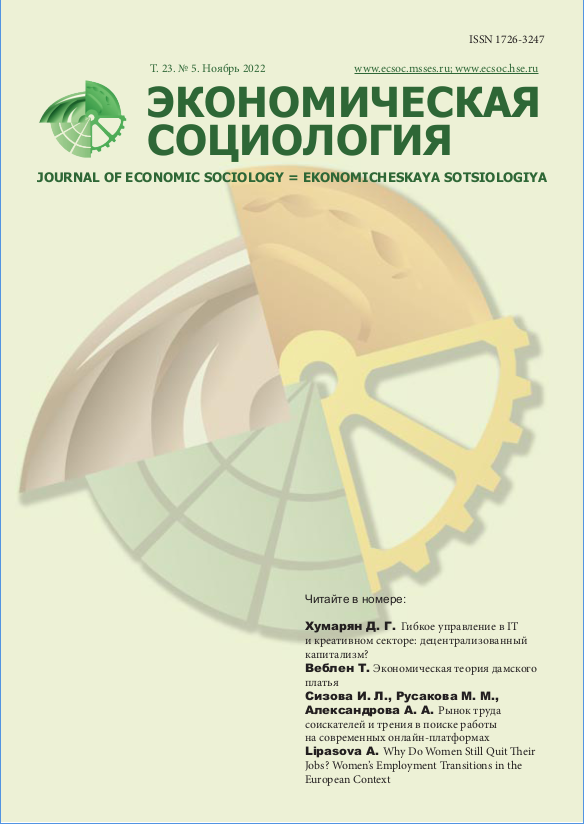The Economic Theory of Woman’s Dress
Abstract
This is a Russian translation of an essay that Thorstein Veblen wrote in 1894. The essay describes ironically the social practices around the acquisition and wearing of the woman’s dress. Many references are made to this interesting source, but we have not been able to identify its accurate translation into Russian and decided to fill the gap. “The Economic Theory of Woman’s Dress” was written for Popular Science Monthly. Like some other papers of Veblen, this one got published in a magazine carrying popular science content to the general reader, which does not preclude its academic significance. The essay has subsequently been republished in reputable volumes. Duke University Press generously granted the rights for a Russian language translation for the Journal of Economic Sociology from a book released in 2000. Veblen hasn’t attached an abstract to his original essay, perhaps in line with the policy of the magazine. This foreword from the translators does not intend to cover all the original author’s ideas and messages. “The Economic Theory of Woman’s Dress”, just like the classical “The Theory of the Leisure Class” from the same author, describes the customs of a particular social strata, including the custom to spend wastefully and conspicuously in order to signal pecuniary strength within a given social environment. The conspicuous expensiveness and novelty of the woman’s dress and the related adornments serve precisely that purpose. Veblen shows the line of progress from the primitive efforts of the savage to beautify himself with gaudy additions to his person to a complex dress of a contemporary woman of upper classes. The three cardinal principles of the theory of woman’s dress, nevertheless, remain relevant. Without a sophisticated wording typical of many armchair scholars, Veblen uses clear and forceful language to explain the woman’s dress as an economic fact and the drivers of aggressive wasteful spending that dress implies.













